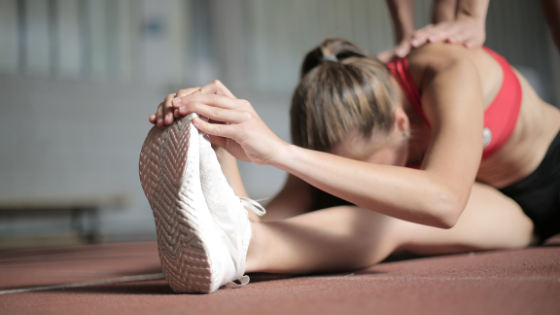Stretching is not just a pre-workout activity. It provides many psychological and physical benefits. It’s a great way to strengthen the body, alleviate stress, and enhance overall health.
Physical Benefits
The following are some of the physical benefits of stretching.
Injury Avoidance
Stretched muscles and tendons are less likely to be pulled, strained, or ruptured. Conversely, cold and tense muscles tend to weaken and wear down opposing tissues when they push and pull against each other.
Flexibility and Range of Motion
Stretching helps muscles become more flexible over time. They move with greater ease, function, and efficiency and are better prepared for unrestricted movements.
Better Posture
Improved posture is another benefit. Stretching can reverse common problems of bad posture, including constipation, incontinence, and acid reflux.
Decreased Soreness
Proper stretching increases blood supply and brings more nutrients to the muscles. More nutrients mean less soreness and stiffness.
Improved Circulation
Blood flow is vital for getting oxygen to all parts of the body. Regular stretching and flexibility training improves the circulatory system’s functioning.
Mental Benefits
The following are some of the mental benefits of stretching.
Less Stress
Regular stretching reduces stress, thus decreasing anxiety, fatigue, and depression. Other effects include lower blood pressure and heart rate.
Reduced Tension
Excess stress can cause muscle tension. Stretching can ease this tension, whether or not it’s before exercise.
Best Ways to Stretch
The following are a few of the best ways to stretch.
Warm-Up Before Stretching
Stretching is not for warming up because cold muscles are more likely to be injured. A few minutes of walking or light jogging can prepare tissues for pre-workout stretching.
Avoid Bouncing
Stretching should not involve bouncing, which can cause tearing. The result of tearing is scar tissue, which tightens muscles. One should stretch a single muscle group for three or four sets, and each stretch should last 15-60 seconds.
Work on Tight Muscles
Tight and sore muscles need extra attention. It’s best to stretch the tight muscles first to increase blood flow and reduce tension.
As the body ages and goes through many changes, stretching helps maintain strength, performance, and flexibility. Regular stretching two to three times a week can improve longevity and quality of life.
